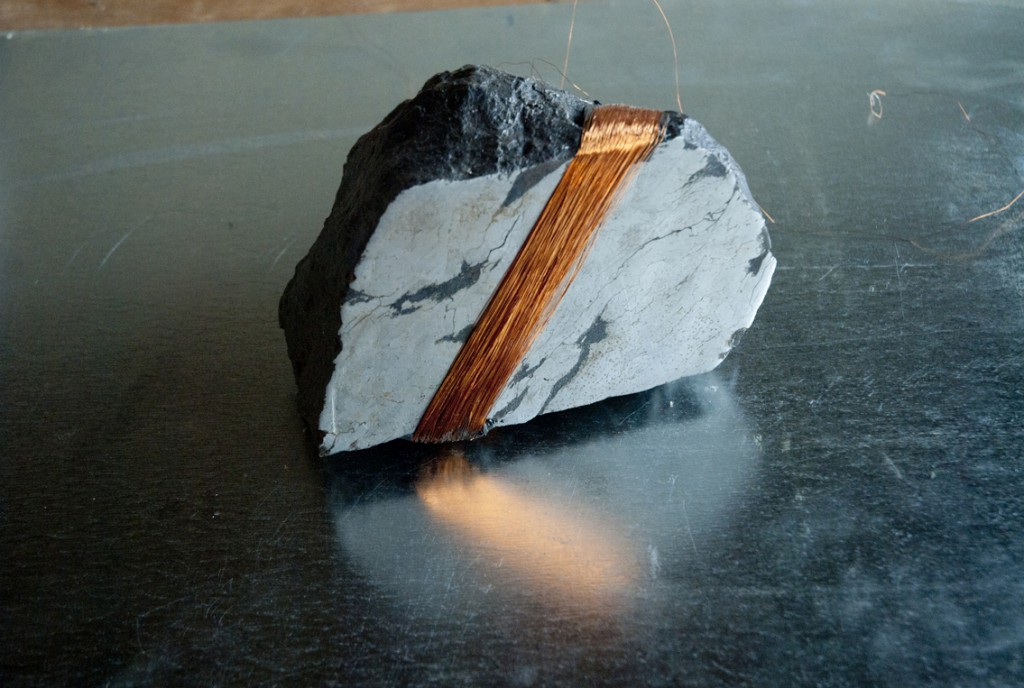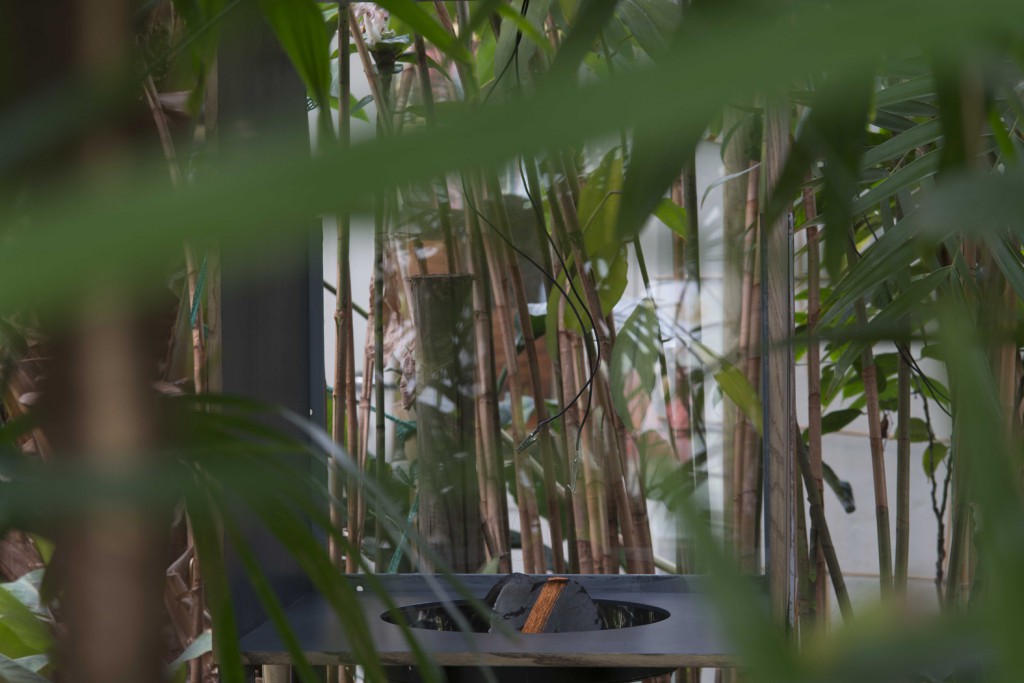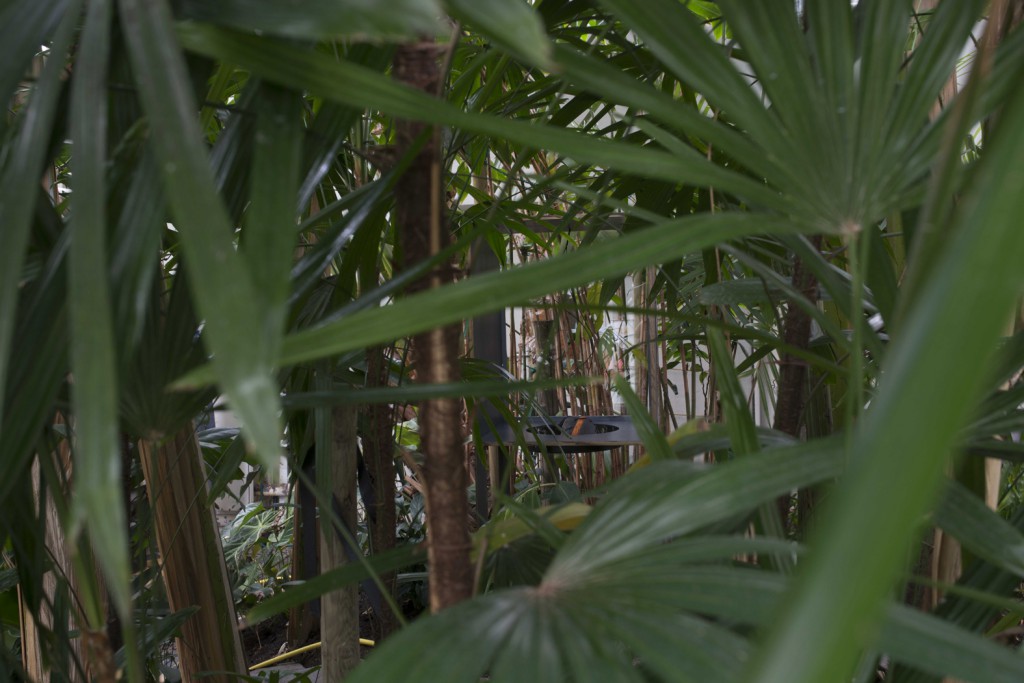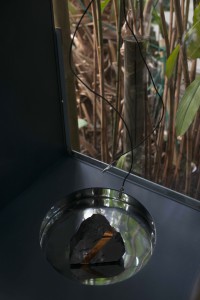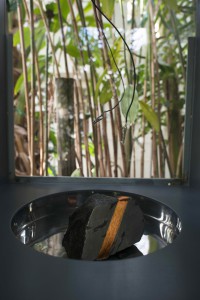installation, 2015
iron meteorite, metal, glass, wood, electronics
The work was made for VOLT´s Imagining Commons
In 1903, when Kristian Birkeland wanted to test his theories of how the Aurora Borealis arises, he built a small magnetic model of the Earth by winding copper wire in layers around an iron core. He hung this ‘terrella’ inside a glass chamber. By passing current through a cathode ray tube, the ‘sun’ of the model, the electric charge produced ‘polar light’ in the Earth-miniature’s magnetosphere. I am inspired by Birkeland’s miniature earth, and in the work with Skala I have explored the ideas of scale, model and experimentation.
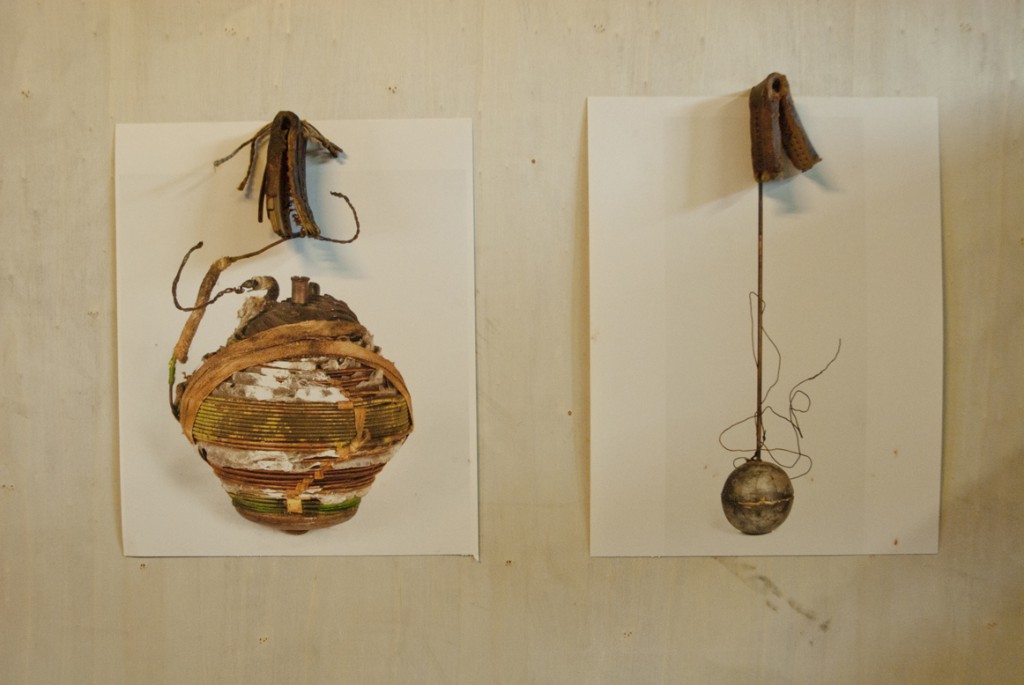
Prints of Birkeland´s terrella photographed in Lidén´s studio, original photos are in the archives of Oslo Technical Museum.
Can one transmit sound through a stone and make the stone vibrate so that the human ear can hear it? It began with a question about magnetism – whether a material like iron could be called magnetic even if it doesn’t attract objects with magnetic properties. Can a lump of iron ore become an electric coil? I discussed this with my colleague Espen Sommer Eide. So I conducted an experiment – around an iron-ore stone I found in the mines in Sørvaranger I carefully wound copper wire – and yes, there was sound. One could sing into a microphone and the stone sang along.
The installation Skala was made for the Palm Room in the Plant House of Bergen´s Botanical Gardens. On the path between the palms, a copper-wound iron meteorite laid in a display case of wood, glass and metal. Sound signals were transmitted into the copper wire and then set off vibrations in the stone. The slight vibrations resonated in the metal plate on which it stood, and the sound became acoustically audible. The meteorite sent low-key sounds out into the space.
This iron meteorite fell down from space at some point four or five thousand years ago. It comes from the crater Piguem Nonralta in Argentina, translated into Spanish as Campo del Cielo, which means the Field of Heaven. As foreign bodies on the Earth, meteorites were until recent times the only material evidence that stars, planets and comets in space share many of the same metals as we find on our planet, such as nickel, cobalt, gallium, germanium and iridium.
What if the iron meteorite is seen as an enormous star and the space around it as its atmosphere? This image has been a guiding principle for the way I have composed the sounds for the work.
Many thanks to Morten Bilet for generously borrowing me the meteorite and I am grateful for the collaboration with VOLT and Muséhagen (UIB) and Lasse Pettersen. Thanks to Thor Brødreskift for photo documentation.
